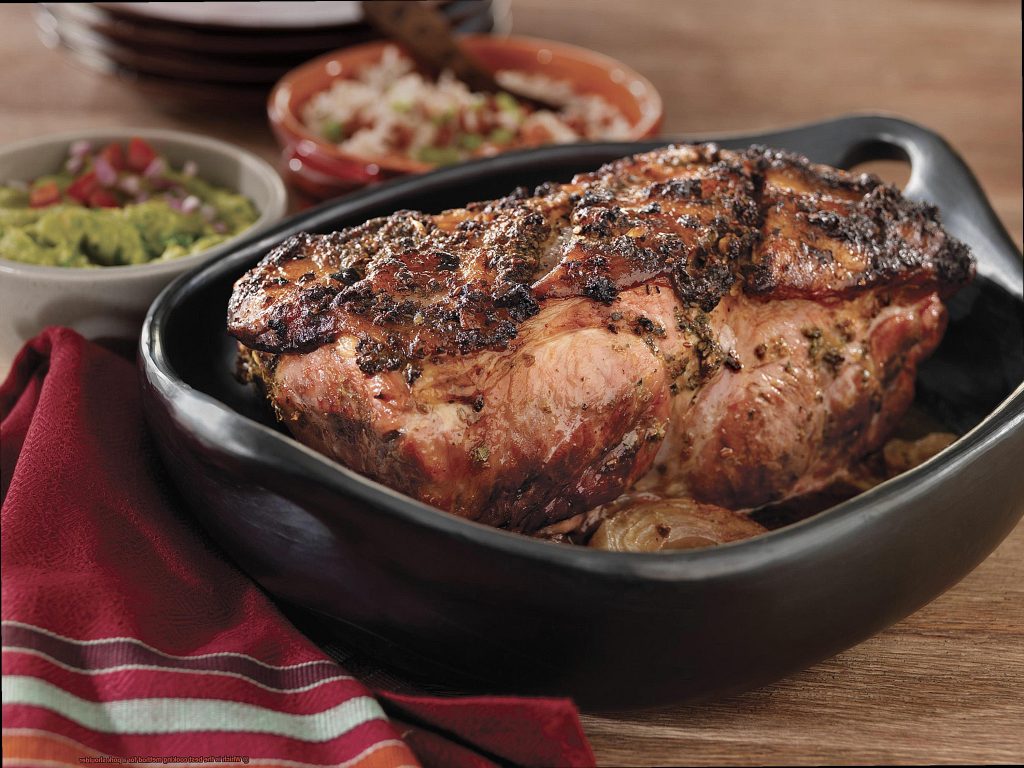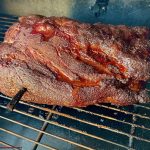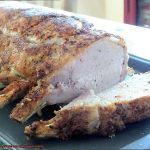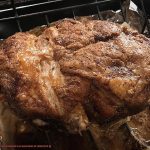Do you crave succulent, mouthwatering pork shoulder that’s bursting with flavor? If so, then you know that selecting the perfect cooking method can make or break your meal. With so many options to choose from – smoking, braising, roasting – it can be tough to decide which one will tantalize your taste buds.
If you’re a BBQ aficionado, smoking your pork shoulder is an absolute must-try. The process infuses the meat with a rich smokiness and imparts a beautiful pink hue. Meanwhile, braising guarantees a fall-apart tender result by slow-cooking the meat in broth or vegetables for hours on end. And if crispy skin is what you’re after, roasting using either a slow-cooking or rotisserie method is a fantastic way to achieve it while still packing in plenty of smoky flavor.
Ultimately, choosing the right cooking method for your pork shoulder depends on your personal preferences and time constraints. But at the end of the day, the best method is always going to be one that delivers juicy and tender meat that leaves you licking your fingers clean. In this blog post, we’ll weigh up the pros and cons of each technique and help you pick out the perfect approach for your cooking style. So get ready to take your pork shoulder game to new heights.
Contents
Smoking Pork Shoulder
If you’re looking to take your pork shoulder game to the next level, look no further than smoking. This method involves cooking the meat slowly over low heat, using wood smoke to infuse it with a delicious smoky flavor that’s sure to impress your taste buds. But how do you choose the right type of wood to achieve the best results?
Hickory is a popular choice for smoking pork shoulder due to its bold and distinctive flavor. The smoke from hickory wood has a slightly sweet and nutty taste that pairs well with the richness of pork. However, be careful not to use too much hickory, as it can quickly overpower the flavor of the meat.
For a more subtle smoky flavor, consider using applewood. The smoke from this wood has a mild and fruity taste that complements the natural sweetness of pork. Plus, it gives the meat a beautiful golden color that’s as pleasing to the eye as it is to the palate.
If you’re looking for something even more delicate, try using maple wood. The smoke from maple has a sweet and subtle flavor that won’t overwhelm the natural taste of the pork. It also gives the meat a lovely caramel color that looks just as good as it tastes.
For those who want a strong and bold smoky flavor, mesquite wood is an excellent choice. The smoke from mesquite has an earthy and almost spicy taste that pairs well with the richness of pork shoulder. However, like hickory, use it sparingly to avoid overpowering the meat.
No matter which type of wood you choose, make sure to use a smoker that can maintain a consistent temperature over a long period of time. This is crucial for ensuring that your pork shoulder becomes tender and flavorful without overcooking.
And don’t forget to experiment with different dry rubs and marinades. Some people prefer to use a dry rub made from spices like paprika, garlic powder, and brown sugar, while others like to marinate the pork shoulder in a mixture of vinegar, Worcestershire sauce, and spices overnight before smoking it.
Roasting Pork Shoulder
Look no further than roasting. This classic cooking method is sure to impress your guests with its juicy, tender meat and crispy exterior. Here’s how to make it happen:
First things first, preheat your oven to 350°F. While it’s heating up, season your pork shoulder with your favorite spices. Whether you prefer a dry rub or a marinade, don’t be afraid to get creative and experiment with different flavors.
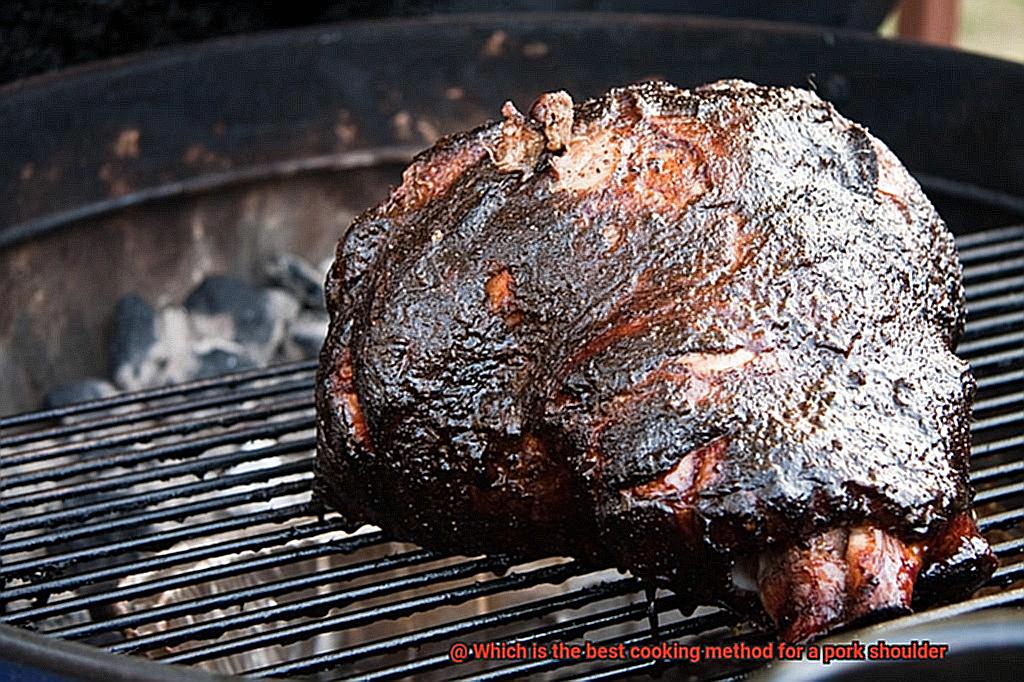
After you’ve seasoned your pork, place it in a roasting pan. For an extra burst of flavor, add some onions, garlic, or carrots to the pan. These veggies will also help keep the meat moist as it cooks.
Monitoring the internal temperature of the pork is key to nailing this recipe. The ideal temperature range for cooked pork is between 145°F and 160°F, depending on your desired level of doneness. A trusty meat thermometer will help you keep track of the temperature as it cooks.
Roasting a pork shoulder typically takes several hours, so make sure you plan ahead and give yourself plenty of time. Once it’s in the oven, all you need to do is check the temperature occasionally.
Once your pork is fully cooked, let it rest for at least 10-15 minutes before slicing and serving. This crucial step allows the juices to redistribute throughout the meat, ensuring maximum flavor and tenderness.
Braising Pork Shoulder
If you’re on the hunt for a cooking method that will result in a juicy and tender pork shoulder, braising is your answer. This technique involves cooking the meat low and slow in a liquid along with vegetables and seasonings to create a deliciously flavorful dish.
To get started, sear the pork shoulder on all sides in a hot pan to achieve a crispy exterior. Then, transfer the meat to a large pot or Dutch oven and add enough liquid to cover the meat about halfway. You have plenty of options for the liquid component- broth, wine, water, or tomato sauce all work well.
Next, add in any desired vegetables and seasonings such as onions, garlic, carrots, celery, thyme, or rosemary. Once you’ve got everything in the pot, bring it to a simmer and cover it with a lid. The pork shoulder should be left to cook for several hours either on the stovetop over low heat or in the oven until it’s so tender it falls off the bone.
Once the pork shoulder is cooked to perfection, remove it from the liquid and let it rest for a few minutes before slicing or shredding. The braising liquid can be strained and served as a flavorful sauce or gravy alongside your pork shoulder.
What’s great about braising is that it’s an easy and adaptable method that can be customized to fit your taste preferences. Whether you’re looking for something savory or sweet, spicy or mild- braising can accommodate it all.
Slow Cooking Pork Shoulder
If you’re looking for a way to achieve tender and juicy pork shoulder, look no further than slow cooking. This method involves cooking the meat over a low heat for an extended period of time, resulting in a succulent and flavorful end product.
One of the keys to successful slow cooking is keeping the meat moist throughout the process. This can be accomplished by adding liquid like broth or water to the cooking vessel or basting the meat regularly with its own juices. Moisture is essential to prevent the pork shoulder from becoming dry and tough, ensuring that it stays tender and delicious.
There are several ways to slow cook pork shoulder, including using a slow cooker or crockpot, an oven, or a smoker. Regardless of which method you choose, patience is key. Slow cooking takes time, but trust us, the end result is well worth the wait.
Using a slow cooker or crockpot is perhaps the easiest method for slow cooking pork shoulder. Simply place the meat in the pot with any desired seasonings or vegetables, add liquid, and set it to a low temperature for several hours. The result? Fall-off-the-bone meat that’s perfect for pulled pork sandwiches or other dishes.
Another popular method is using an oven or smoker. Roasting the pork shoulder on a low temperature for several hours until fully cooked will result in juicy and tender meat. For those who prefer additional flavor, smoking it with wood chips is a great option.
Advantages and Disadvantages of Each Method
Don’t worry – we’re here to guide you through the advantages and disadvantages of each method, so you can make an informed decision.
Firstly, let’s talk about smoking. Smoking is a popular method for cooking pork shoulder, as it infuses the meat with a delicious smoky flavor. One of the main advantages of smoking is that it results in tender and flavorful meat. However, smoking can be time-consuming and requires specialized equipment like a smoker or grill. So, if you’re short on time or don’t have the necessary equipment, smoking may not be the best option for you.
On the other hand, roasting is a method that creates a crispy exterior while keeping the meat moist on the inside. It’s also convenient, as it doesn’t require any special equipment. However, roasting may not produce as much flavor as other methods and may result in less tender meat.
Braising involves cooking the pork shoulder in liquid at a low temperature for an extended period of time. This method creates a juicy and tender meat with a rich sauce or broth. However, braising can also be time-consuming and requires frequent monitoring to prevent burning or overcooking.
Lastly, grilling involves cooking the pork shoulder over high heat for a short amount of time. Grilling can create a charred exterior with a slightly pink interior while maintaining tenderness. However, grilling requires close attention to prevent overcooking or burning the meat.
The Best Method for Different Types of Cooking Experiences
With several different methods to choose from, it can be challenging to decide which is the best for your desired cooking experience. Don’t worry, we’re here to help you make an informed decision.
For those who want a hassle-free experience with minimal monitoring, using a slow cooker or crockpot is the perfect method. Simply season your pork shoulder with your favorite spices and place it in the slow cooker with liquid such as broth or apple cider. Cook on low for 8-10 hours until the meat is tender and falls apart easily with a fork. This method is ideal for those who prefer a hands-off approach.
If you’re in the mood for some smoky goodness, smoking your pork shoulder may be the perfect option. This method requires a bit more work and time but results in a delicious smoky flavor. Start by coating your pork shoulder in a dry rub and let it sit overnight in the refrigerator. Then, smoke it at a low temperature (around 225°F) for several hours until the internal temperature reaches 195°F. This method is ideal for those who love experimenting with different flavors and enjoy taking their time to achieve the perfect result.
For those who crave a crispy exterior, roasting or grilling may be your best bet. Roasting involves cooking in an oven at high heat (around 425°F) for several hours until the meat is tender and the exterior is crispy. On the other hand, grilling involves cooking over direct heat for a shorter period of time, resulting in a charred exterior and juicy interior. Both methods are perfect for those who want a delicious pork shoulder with a crispy exterior.
RfDZshHRLQM” >
Conclusion
In conclusion, when it comes to cooking a pork shoulder, there are several methods to choose from. Whether you’re a fan of smoky flavors, crispy textures, or tender meat that falls off the bone, there’s a method that will suit your personal preferences and time constraints.
If you’re looking to infuse your pork shoulder with a rich smokiness and love experimenting with different wood types, smoking is the way to go. However, this method can be time-consuming and requires specialized equipment.
Roasting is perfect for those who crave a crispy exterior and juicy interior, but may not produce as much flavor as other methods. Grilling also provides a crispy texture but requires close attention to prevent overcooking or burning the meat.
Braising creates a tender and flavorful dish with a rich sauce or broth, but it can be time-consuming and requires frequent monitoring. On the other hand, slow cooking in a crockpot or slow cooker is an excellent option for achieving succulent meat that falls off the bone without requiring constant supervision.
No matter which method you choose, don’t forget to experiment with different dry rubs and marinades to create mouthwatering flavors that leave you licking your fingers clean. With these tips in mind, take your pork shoulder game to new heights.
In short: Smoking for smoky goodness; roasting or grilling for crispy textures; braising for tender meat in flavorful sauce; slow cooking for hassle-free cooking.

